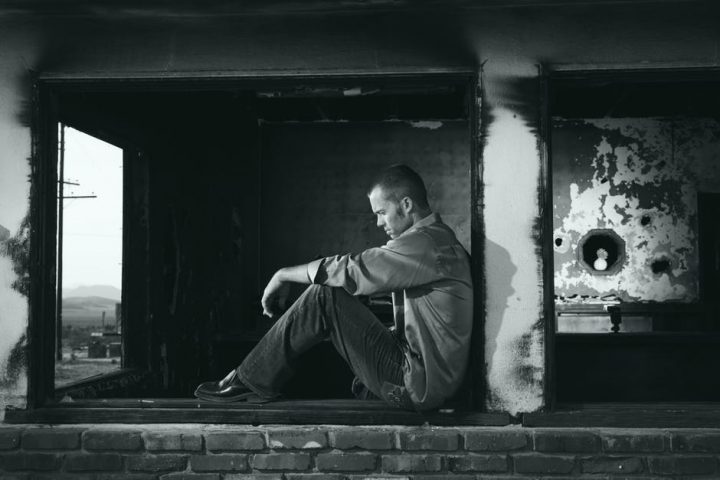
 Addiction and PTSD
Addiction and PTSDMost experts agree that addiction is a “complex disorder” – the development of which is influenced by neuroscience, our environment (including family and social dynamics), and our experiences of the world around us, good or bad. And we have written here previously about the close connection that often exists between disorders.
But a new study reveals just how profound a collection of traumatic influences and adverse experiences in young life can be on the likelihood that people will suffer from substance abuse problems.
A study from the Journal of Substance Abuse Treatment, published in October, revealed that juvenile offenders diagnosed with Post-Traumatic Stress Disorder (PTSD) are at a 67 percent greater risk of entering substance abuse treatment within seven years.
“It’s quite shocking, honestly, and really speaks to the lasting impact of early childhood trauma,” said Jordan Davis, co-author of the study and doctoral student in social work at the University of Illinois. Previous studies have found that at least 30 percent of people in the criminal justice system have PTSD symptoms.
The study, which was conducted to identify the elements which predict the entry of juvenile youths into substance abuse treatment and determine those who would benefit most from early interventions, followed 1,350 delinquent youths between the ages of 14 and 18 at the beginning of the project for seven years.
Researchers then looked at the social-ecological determinants of the young people’s entry into drug treatment, focusing on four factors: the young person’s behavior and traits, parental dynamics, peer influences, and neighborhood characteristics.
The study leads found that when taking all of these factors as a whole, the relationship with parents and their parenting style, perhaps surprisingly, had no influence on risk for treatment entry. Yet, associating with deviant peers, being diagnosed with PTSD, and having emotion-regulation problems increased these youths’ risk of entering treatment exponentially.
The findings show that the majority of young offenders who need substance abuse treatment will have experienced serious emotional or physical trauma. Exposure to chronic stress alters brain chemistry and functioning, making children susceptible to many problems, neuroscientists have found.
“PTSD has a dramatic and lasting impact on individuals’ stress-response system, triggering their brains to secrete excess cortisol whenever they encounter stressors,” Davis said.
Trauma also hinders – and can even negatively affect – the development of the prefrontal cortex, which is associated with decision-making and impulse control. As a result, individuals who experience more trauma and stress may respond differently to a wide range of situations and stimuli. And those teens that had emotion regulation problems and poor impulse control were significantly more likely to enter drug or alcohol treatment compared with peers who had stable temperaments, the researchers discovered.
Associating with greater numbers of deviant peers also increased youths’ risk of entering drug or alcohol treatment – by 43 percent, the researchers found.
“Peers are especially salient in the development of substance use problems,” said co-author Tara Dumas, a psychology professor at Huron College. “It is vitally important to consider youths’ peers when developing prevention programming.”
 Services of Intervention with Juveniles
Services of Intervention with JuvenilesInterventions that focus only on drug use or criminal behavior may not be enough to help youths stay sober and out of trouble with the law, especially when they have co-occurring diagnoses or strong ties to risky peers or living environments, co-authors suggested in another study published in Drug and Alcohol Dependence. Juvenile offenders with these kinds of profiles and backgrounds may require ongoing care that includes trauma and family therapy, as well as community-based services.
“Our research suggests that social and environmental risk factors play a central role in the development and maintenance of substance use and criminal behavior during emerging adulthood,” he said. “Providing personalized resources after treatment ends is an important step in sustaining reductions in drug use and criminal behavior.”
Tailored after-care sessions — consultations in person, or even by computer or text — have been shown to decrease the amount of time that youths spend with deviant peers and hold promise for reducing criminal behavior and drug use, according to the researchers.
“Traditionally, once we get people into treatment, we put them through the program, then wish them good luck and send them out on their own,” Davis said. “However, someone with chronic trauma and substance use problems is probably going to need ongoing care that re-evaluates their treatment plan at regular intervals and addresses issues such as mental health problems or housing and connects them with resources.”
Clearly, a young person’s drug or alcohol abuse must be arrested if they are going to get back on the road to a healthy and successful life with productive behaviors and sound relationships. But, in more complicated cases where addiction, trauma, and other negative social factors are comingled, it often does “take a village.”
At Bridging the Gaps, we conduct individualized assessments of each client’s clinical needs and background when determining a course of treatment likely to be most effective – and if their substance use disorder is the most immediate or clinically needed intervention.
If we can help on a client’s path to recovery, we work closely with other specialists in coordinating a comprehensive treatment plan that addresses all aspects of a person’s propensity and risk to drink or use. The length and complexity of each care plan vary, but with the right approach and partnership between client and care provider, almost all of us can find a path to wellness.